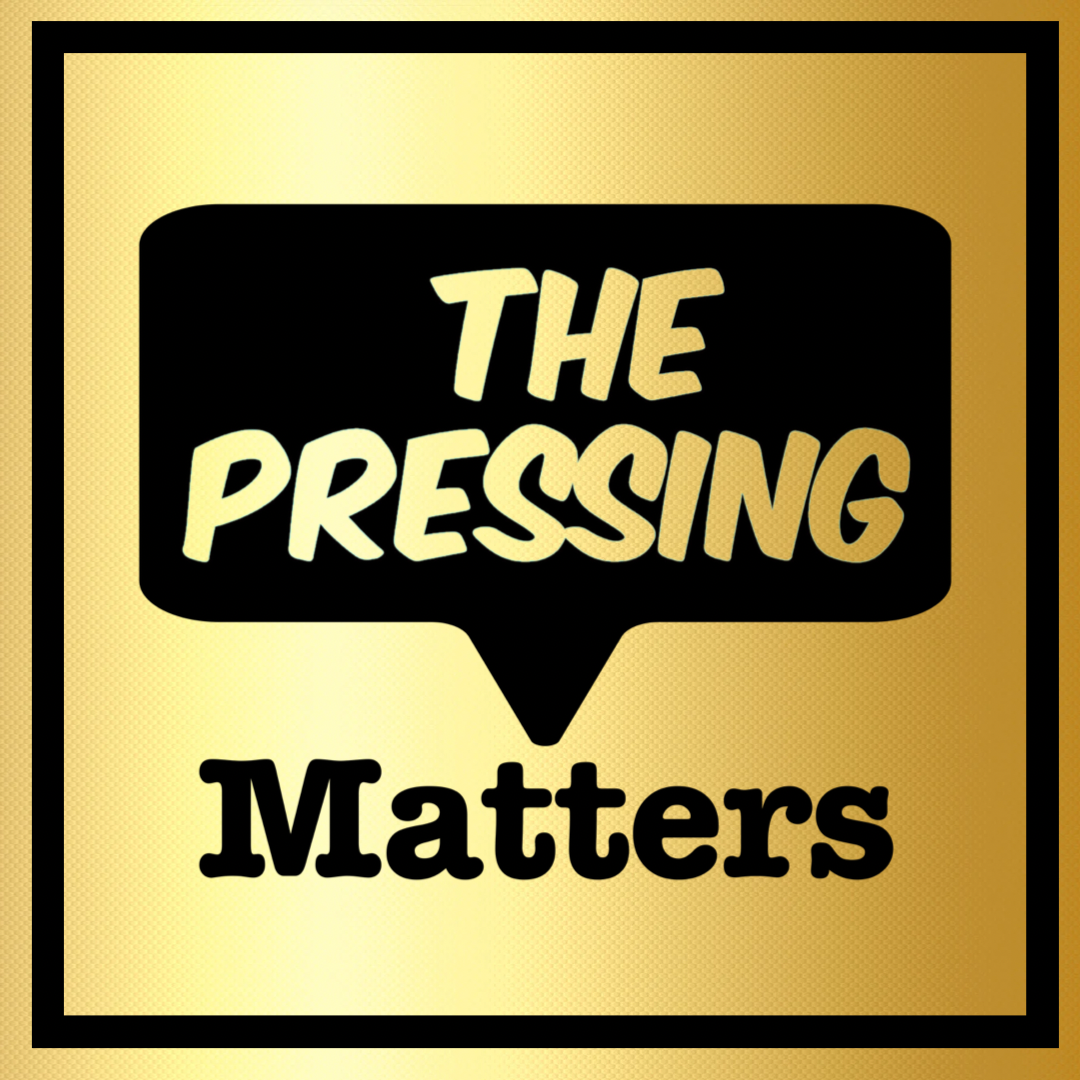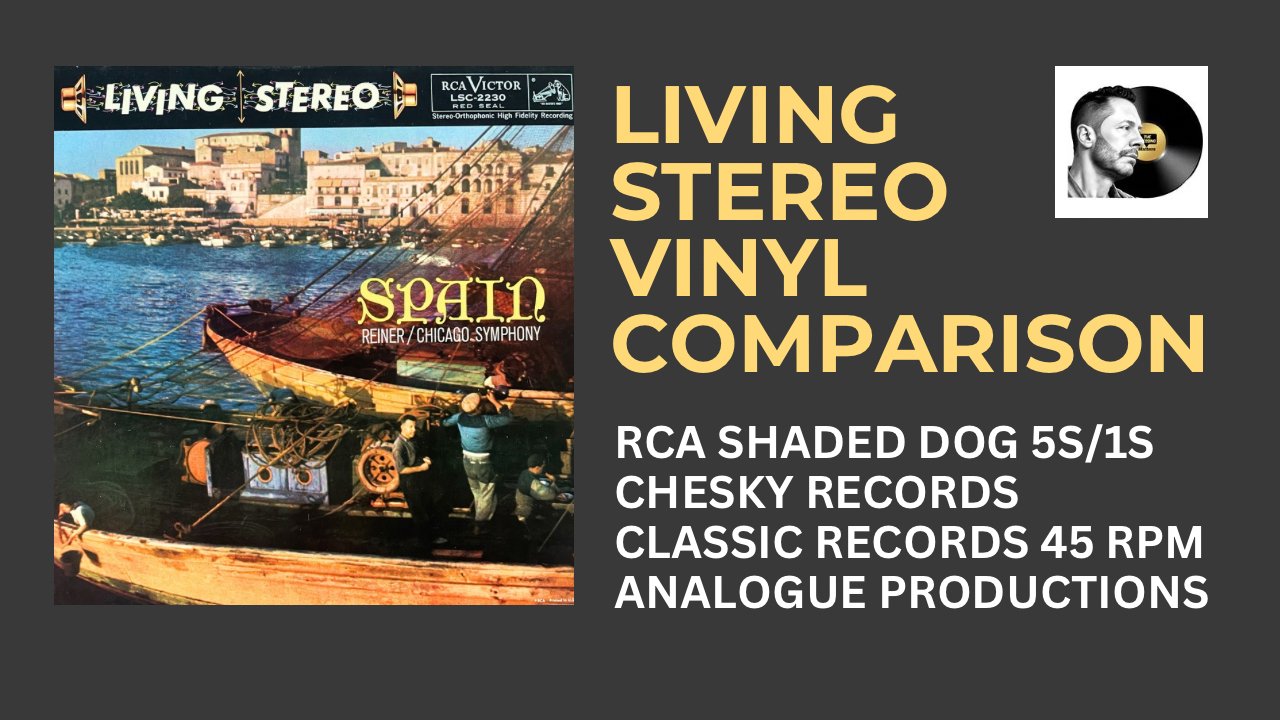RCA Living Stereo Vinyl Comparison - Spain - Reiner / CSO
Fritz Reiner's Spain, recorded in 1958 with the Chicago Symphony Orchestra, is a beloved classic in the world of audiophile recordings. Released under RCA’s Living Stereo label, this recording has attracted the attention of audiophiles for decades due to its rich sound and dynamic range. But what makes it so special? In this blog post, I'll walk you through the different pressings of this iconic album, share my experience with them, and explain why this record continues to captivate vinyl collectors worldwide.
The Original Pressing: A Special Release with Room for Improvement
My journey with Spain began years ago when I found an original 1958 pressing in a thrift store near Fenway Park in Boston, around 1982 or 1983. Though it wasn’t in perfect shape, I was drawn to it because I had just started collecting Living Stereo pressings. The album, with its distinctive hard gatefold jacket and maroon spine, felt special even before I dropped the needle.
The original release is beautiful in its presentation. It includes a booklet printed on watercolor-like paper—something RCA must have thought highly of at the time. My copy is a 5S 1S Indianapolis pressing, and if you’re familiar with these, you know the Indianapolis pressings often yield some of the best results. That said, I have to admit that the sound of this particular pressing didn't immediately grab me.
Even after multiple cleanings and using a Sugar Cube de-clicker, the record didn’t live up to the high expectations I have for Living Stereo recordings. While the climaxes—especially in pieces like Iberia—shine through, the strings and brass sections can feel veiled. The quiet moments, in particular, fail to convey the same level of clarity you expect from a top-tier Living Stereo pressing. Still, the music itself is intoxicating and worth experiencing.
Chesky's 150g Pressing: Tube Cut and Lush Sound
Fast forward to the late '90s when I picked up the 150g pressing from Chesky Records. Chesky had a license to press several Living Stereo titles, and this Spain release was one of them. Though the 150g pressings were prone to groove noise, they offered something special in terms of warmth due to the tube mastering technique used.
The sound on this pressing is more lush and detailed than the original, especially in the midrange and percussion sections. The castanets and triangles that punctuate the record come to life with greater prominence. However, while the climaxes are thrilling, they feel a bit constricted. There's ample dynamic range, but it's not quite as open as it could be. Still, if you’re looking for a good reissue and don’t mind some surface noise, this Chesky pressing offers an enjoyable listening experience.
Analog Productions: A Clear Winner
The next pressing I added to my collection was from Analog Productions. Released on 33 RPM vinyl, this version of Spain is absolutely stunning. Cut by Ryan K. Smith from the original three-track master tape, it delivers a rich, glittering sound that captures the full dynamic range of the performance.
This pressing improves on the Chesky release in several key ways. The string tone, while never as silky as some of the best Living Stereo pressings, is clearer and more detailed. The percussion, especially the snare drum and bass drum, has weight and presence. The overall dynamic range is vastly improved, allowing the music to really come alive.
If you’re looking for a 33 RPM pressing of Spain, this one is an easy recommendation. It’s not quite as thrilling as the 45 RPM version (which we’ll get to shortly), but it’s a beautiful, clear window onto this remarkable performance.
Classic 45 RPM Pressing: The Ultimate Experience
For audiophiles, there's one pressing that stands above the rest: the 45 RPM version pressed by Classic Records. Released on 180g vinyl, this edition is a true masterpiece. Cut by Bernie Grundman, it opens up the sound in a way that no other pressing does.
The 45 RPM format, with its larger grooves and more spacious track layout, allows for a much broader dynamic range. The climaxes in Levita Brev and Iberia explode with energy, and the percussion—particularly the bass drum—shakes the room. Every note from the castanets to the triangles is vivid and placed perfectly in space. The silence between the notes is equally striking, offering a sense of depth and clarity that’s almost holographic.
While 45 RPM records take up more shelf space and require more frequent flipping, the sound quality of this version of Spain is worth the effort. The bass is fuller, the dynamic range more expansive, and the overall presentation of the music is unparalleled. If you can get your hands on a copy, you’re in for a truly special experience.
Conclusion: Which Pressing is Right for You?
After auditioning multiple versions of Spain over several weeks, I can confidently say that the 45 RPM pressing from Classic Records is the best of the bunch. It captures the full dynamic range of the performance and delivers the music with an intensity and clarity that no other pressing quite matches.
That said, if you’re not interested in dealing with the size and cost of 45 RPM pressings, the Analog Productions 33 RPM version is a fantastic alternative. It provides a clear, engaging sound and gives you a great sense of what this recording is all about. The Chesky 150g pressing, while not without its flaws, is still a worthy choice if you’re after a tube-mastered version with a warm, lush sound.
In the end, no matter which pressing you choose, Spain is a record that belongs in any serious vinyl collection. Whether you’re a fan of Spanish music or simply looking for an audiophile gem, this album delivers thrills from start to finish.


